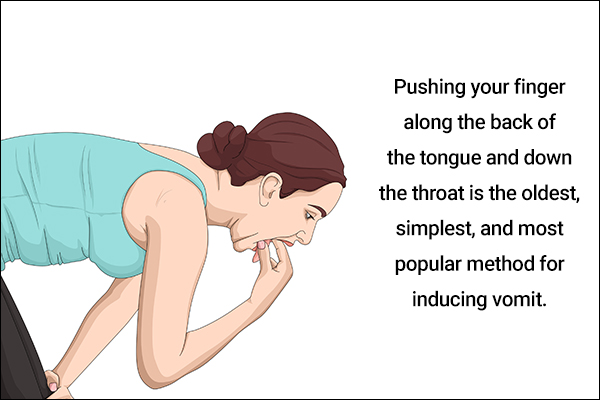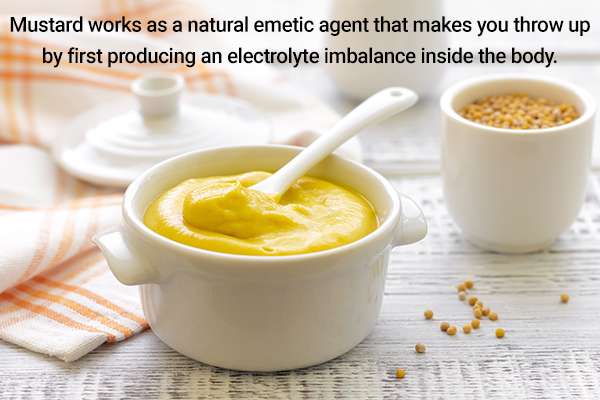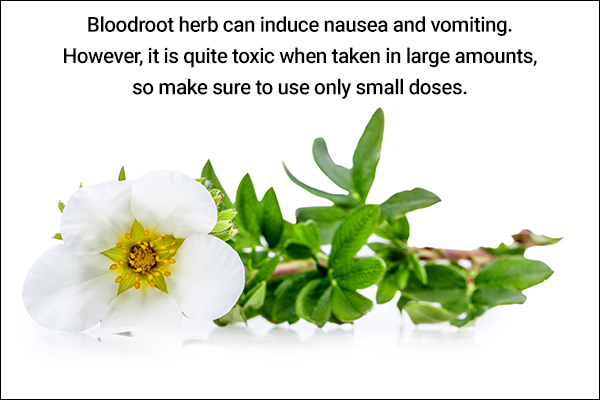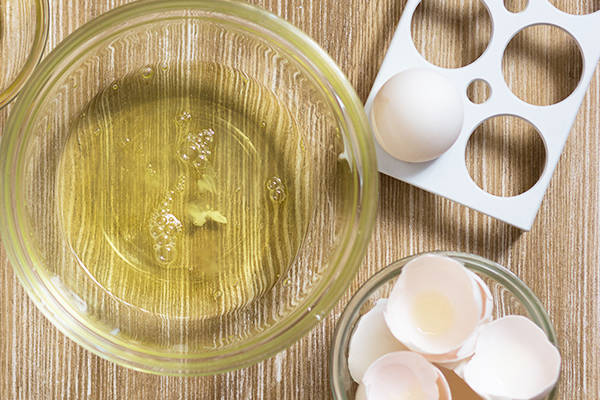In this article:
Vomiting may be an unpleasant experience, but it serves an important purpose. It is your body’s way of purging harmful substances from the gastrointestinal tract via the nose or mouth. (1) It is normally an involuntary response, but it can be willfully induced in certain situations.

You tend to feel sick and queasy before actually throwing up, and this is referred to as nausea. This discomfort occurs because your body realizes that you have ingested something that is bad for you and signals the need to get rid of it.
The unwanted contents of the stomach are pushed upwards through the gastrointestinal tract, which makes you gag, and you will continue to feel uneasy until you vomit them out.
Sometimes nausea lasts for so long that you have no option but to make yourself throw up using certain techniques to gain relief.
Self-induced vomiting is helpful in the following conditions:
- After ingesting a noncorrosive poisonous, toxic, or harmful substance such as drugs, wrong medication, or medicinal herb
- After eating spoilt food or something you are allergic to
- If you have a severe bout of acidity, indigestion, or food poisoning
- If you have had too much alcohol and are now feeling extremely inebriated and uneasy
Word of caution: Using emetics or other techniques to induce vomiting is not safe for pregnant or breastfeeding women, kids under the age of 12 years, or unconscious individuals.
Also, some people voluntarily throw up after every meal as a means to achieve weight loss. Inducing vomiting in a healthy state to lose weight is characterized as an eating disorder called bulimia. This can cause dangerous health outcomes in the long run and is strictly not advised.
When Should You Not Throw Up?
Self-induced vomiting is not recommended in the following cases as it can do more harm than good:
- After swallowing solid objects made of metal, plastic, or stone
- After ingesting corrosive chemical products such as detergents, bleach, soaps, solvents, floor cleaners, shampoos, kerosene, and gasoline
Best Ways to Induce Vomiting
You can try the following techniques to make yourself throw up. If one doesn’t work, try another.
1. Push a finger down your throat

Pushing your finger along the back of the tongue and down the throat is the oldest, simplest, and most popular method for inducing vomit. It works by activating your gag reflex so that you can easily push out the contents of your stomach. (2)
You may not throw up at the first attempt; try again until you vomit.
Important points:
- Wash your hands before putting your finger in your mouth.
- Make sure your nails are trimmed so that they don’t end up damaging your throat.
- Do not put pressure on your abdominal area.
How to do:
- Insert your finger deep inside your mouth and down your throat as much as you can.
- Take out your finger the minute you start gagging to expel the vomit.
- If you don’t throw up the first time and continue to feel nauseous, repeat the procedure.
2. Use a toothbrush

This technique works on the same principle as the previous one: using topical stimulation to trigger the gag reflex and thereby induce vomiting.
How to do:
- Wash a toothbrush so that it’s clean and its bristles are wet.
- Gently rub the bristles against the back of your tongue to make yourself gag, but don’t push it too deep into the throat that you start choking.
- Remove the toothbrush from your mouth when you start gagging to allow the vomit to flow out. If you don’t vomit on the first attempt, try again until you do.
- Once you are done, thoroughly clean the toothbrush or throw it away and get a new one.
3. Try a mustard solution

Mustard is full of sodium, which can disrupt the body’s electrolyte balance when taken orally. Your body will then try to get rid of the excess sodium through vomiting to restore its natural electrolyte balance.
Thus, mustard works as a natural emetic agent that makes you throw up by first producing an electrolyte imbalance inside the body. (3) Plus, the fact that it tastes so bad will further trigger your gag reflex and the urge to vomit.
How to do:
- Dissolve 1 tablespoon of mustard spread into a cup of warm water.
- Gulp down this solution very quickly.
- You may have to wait 20–30 minutes for the remedy to work and cause vomiting.
4. Try bloodroot herb

Bloodroot herb can induce nausea and vomiting. However, it is quite toxic when taken in large amounts, so make sure to use only small doses. (4)
Overdosing on this herb can lead to severe side effects such as tunnel vision and foot pain and can even prove deadly. Therefore, it is recommended that you consult your doctor about the safe dosage before trying this remedy.
How to do:
- Mix 1 teaspoon of bloodroot powder in 1 cup of water, and drink it quickly to make yourself throw up.
- Take 1–2 ml of bloodroot tincture three times a day.
Bloodroot dosage, warnings, and side effects
Bloodroot can prove quite toxic in concentrated amounts, so medicinal intake of this herb should only be done under the guidance of an herbalist or doctor, especially in the case of children.
High doses can lead to lightheadedness, fainting spells, nausea and vomiting, hazy vision, a burning sensation in the stomach, and slowing down of your heart rate. Seek immediate medical help if you experience any of these symptoms.
This herb is not safe for pregnant or breastfeeding women.
5. Gargle with egg whites

The foul smell, unpleasant taste, and slimy texture of raw egg white can make you gag, especially if you are asked to gargle with it. This is one of the fastest ways to make yourself puke out the contents of your stomach.
How to do:
- Crack 2–3 eggs in a cup and carefully remove the yolks.
- Gargle with the egg whites to activate your gag reflex and induce vomiting.
- If you don’t throw up in the first go, try again.
6. Drink warm salt water

Table salt contains a heavy amount of sodium. Drinking a saline solution will therefore shoot up your sodium levels, which will disrupt your body’s natural electrolyte balance. As a result, your body will try to expel the extra sodium from its system through vomiting to correct the electrolyte imbalance.
Consuming a small amount of saline can get the job done, but even that contains enough sodium to adversely affect your health, so this remedy should only be used when all other measures fail. (5)
This remedy uses tablespoons of salt, which contains 9 times the daily recommended intake of sodium for a healthy individual. Do not drink more than the recommended amount to avoid drastic electrolyte imbalance, which may lead to serious health problems and can be hard to correct.
How to do:
- Put 3 tablespoons of table salt in a glass of water.
- Mix well so that the salt is fully dissolved.
- Gulp down the solution quickly.
- It can take about 30 minutes for the remedy to kick in and induce vomiting
Disclaimer: This remedy is not recommended for people suffering from thyroid problems, hypertension, or cardiovascular ailments.
After Care Tips

Severe or multiple bouts of vomiting can take a serious toll on your body. The following measures can help you recover fast:
- Drink plenty of water and other clear, nonacidic, non-caffeinated fluids such as freshly squeezed fruit juices and nutritious broths to rehydrate your body. But if you continue to feel sick, tired, and dehydrated despite proper fluid intake, consult your doctor. Severe or frequent vomiting can cause extreme dehydration and major electrolyte imbalance, which can only be corrected through intravenous administration of fluids.
- Vomiting causes a violent upheaval inside your gastrointestinal tract, and it may take some time for it to recover. So, it is important to give your digestive system some much-needed rest. Once you regain your appetite after throwing up, start slow with small amounts of bland semisolid foods. You should wait at least 12 hours before starting solid foods. Avoid foods that are high in spice, sodium, and fat as they irritate your recovering digestive tract. Go for a walk after meals to facilitate easy digestion. Don’t lie down soon after a meal as this can trigger acid reflux and hamper digestion.
Side Effects of Throwing Up

Frequent or severe vomiting may cause the following side effects:
- You may become dehydrated due to the copious loss of fluids. (6)
- If the vomit spills into your airways, it will be sucked into your lungs where the stomach acid and food-borne bacteria can cause inflammation and infection such as pneumonia. (7)
- The reflux of stomach acid inside your mouth can erode the tooth enamel (8) and damage your gums as well as the sensitive inner lining of the oral cavity.
- One of the biggest risks of inducing vomiting is the possibility of causing pneumonia. If this occurs, the lungs will usually become inflamed and bacteria in the food can start to grow in the lungs.
- Repeated exposure to gastric acid can wound the sensitive soft tissue inside your food pipe.
When to See a Doctor
Seek immediate medical attention if:
- Your vomit is speckled with blood, which may appear bright red or brown as coffee grounds.
- You get severe headaches after throwing up.
- You develop stiffness in the neck post vomiting.
- You feel extremely tired and disoriented after bouts of vomiting.
- You feel severe pain in the abdomen after vomiting.
- You develop a fever over 101°F (38°C).
- Your breathing or pulse rate becomes abnormally rapid.
Does Ipecac Work to Induce Vomiting?
Ipecac syrup was the go-to medicine to induce vomiting in the 1960s. It was often used to make children throw up after they consumed something toxic or poisonous.
But it was later found to be quite ineffective in this regard and was red flagged by Poison Control and the American Academy of Pediatrics, which prompted the FDA to stop selling it over the counter in 2003. (9)
This syrup is known to induce lightheadedness, low blood pressure, rapid heart rate, and shortness of breath, among other adverse side effects. It is prohibited for kids below the age of one and is not safe for long-term use in adults due to the risk of serious complications.
Final Word
The New Zealand National Poisons Centre (NPC) advises against using self-induced vomiting as the first-line treatment for poisoning, (10) especially if it is caused by corrosive chemical toxins.
This is because the forceful expulsion of acidic stomach contents may not be sufficient to remove enough of the poison from your system. Plus, it can irritate or burn the inner lining of your throat. Therefore, you must immediately call your doctor, local hospital, or poison control to determine the most suitable course of action.
Self-induced vomiting may be recommended as the last resort and should be performed under proper care. It is important to learn the proper technique to induce vomiting and understand the potential hazards associated with it.
By and large, this intervention is only to be used in not-so-serious situations. Severe cases of poisoning prompt medical attention.
- Was this article helpful?
- YES, THANKS!NOT REALLY


